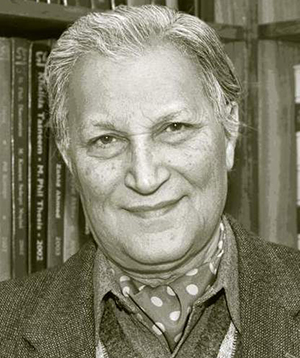Written by: M. Naeem Qureshi
Posted on: September 10, 2015 | 
Advised by his personal physician, Jinnah took time out and went to Ziarat in Baluchistan to recuperate. He thought there was nothing serious with him but his optimism did not match with the diagnosis of his doctor who had been called to treat him. As Dr Col. Ilahi Bakhsh later recalled Jinnah was suffering from a lung disease and insinuated unexplained official apathy and neglect towards him. Some years later, Collins and Lappiere dramatically claimed in their Freedom at Midnight that Dr Jal R. Patel, a Bombay Physician, had treated Jinnah earlier in 1946 for tuberculosis but had kept it a secret on the directions of his patient. These assertions stirred considerable controversy though Dr Patel’s earlier statement made to Hector Bolitho, Jinnah’s biographer, contradicts the claim of such a malady. So what is the truth?
The truth is that sometimes before the partition of British India, Jinnah had developed problems with his health owing to the ever-increasing quantum of work, which required him to seek medical advice more often. By December 1946, he was so overwhelmed with work that he had a nervous breakdown from which he did not recover until March 1947. The establishment of Pakistan and the colossal problems that the new State inherited pushed him further nearer to a breakdown. But Jinnah’s clinical record and medical reports preserved at the National Archives of Pakistan and the Cabinet Division in Islamabad have a different story to tell. For instance, an X-ray taken in Bombay in August 1940 shows ‘a fair amount of mottling’ in right upper lobe of the lung but it was all perfectly healed up. There was no mention of any tuberculosis. Five years later, another X-ray taken in Delhi in April 1945 confirms that both lungs were fairly lighted up. There were calcified signs of old pleurisy but no tuberculosis. Two months later in June 1945, another X-ray taken in Bombay reported a much-improved condition. Adhesions had gone and the lung contour had become regular. There was no evidence of pleurisy. The old calcified patches were just the remnants of healed lesions. There were again no signs of tuberculosis. In fact, in summer 1945, Jinnah had been feeling much better than in the recent past. Similarly, the haematological and cytological reports indicated no abnormality in the overall picture. Jinnah’s urine and stools tests also had no pathological abnormality. The electrocardiograph tests conducted in March and June 1945 showed his heart was normal. The X-ray examination of the lumbar spine, however, indicated that he was suffering from a back problem. Overall, however, there was no organic problem.

You may also like: